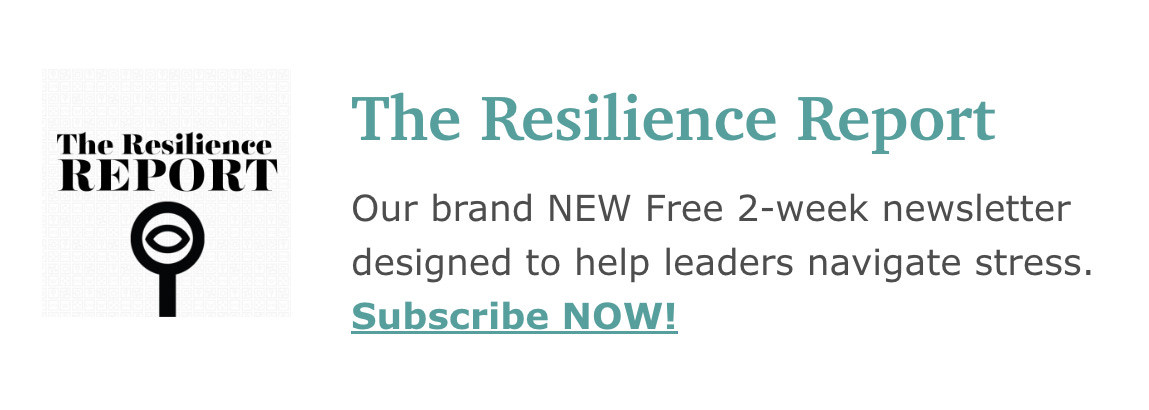The Space Between Impulse & Response: Regulate Before You Lead
The Nervous System Skill Most Leaders Skip
Regulate Before You Lead: The Nervous System Skill Most Leaders Skip
Hello, High Performer.
How you doin’?
✅ Productive and organized
✅ Prepped for all of your meetings
✅ Well spoken, and you know your $hit
✅ Polished and well-dressed
✅ Generally kicking a$$ and taking names
How is your nervous system? Have you checked in recently?
You can have the best strategy, the slickest deck, and be the smartest, most prepared person in the room — but if your nervous system is in chaos? You’re leading from a risky place. Chances are that you are reacting vs. responding more than you think.
Let’s talk about the leadership skill no one teaches: Nervous System Regulation.
The Problem: Emotional Hijacks in Disguise
You are a high performer, which means that you manage your emotional hijacks better than the average bear. You are probably fooling a lot of people. Hell, you might even be fooling yourself. You think you’re being logical. But really?
Your default responses are calling the shots.
Your ego is shielding you from slowing down, even when you could find some space without sacrificing productivity.
Your overstimulation is preventing you from fully listening and absorbing new information.
Your “last straw” is hiding under a pile of TODOs.
When your nervous system is dysregulated, your leadership decisions aren’t as thoughtful and grounded as they could be — they’re reactive.
This can look like:
Passive-aggressive feedback or complaining to the wrong person
Avoiding hard conversations because you “just don’t have the bandwidth”
Micromanaging things that don’t matter
Overpromising to people-please or pacify
Distracting yourself with strange tasks (example: a sudden urge to reorganize your bookshelf alphabetically by genre)
Zoning out at strange moments
This isn’t just a you problem. It’s a Chaos Era leadership epidemic.
The Solution: EQ Starts in the Body
This is the woo-woo. The intervention that seems too simple to be useful. But the fact is that practicing self-regulation, mindfulness, stress management, and burnout prevention is simple, but not easy. The practices are simple, but the consistency is difficult.
We need to:
Pause before reacting
Stay present in discomfort
Respond without shutting down or spiraling
That kind of emotional intelligence doesn’t come from reading a book. It comes from learning how your nervous system works under pressure and practicing how to regulate it.
Regulation isn’t a soft skill. It’s the foundation of every skill that matters:
Giving and receiving feedback
Navigating conflict
Managing up, down, and sideways
Leading through change
How to Access A Better Way: Lead from a Regulated State
1. Notice Your Activation Cues
Start small. What does your body feel like when your nervous system is activated? People are different, and the same person can experience different cues in different circumstances. Pay attention. Your body is talking to you all the time.
Common signs that your body is moving into survival mode:
Chest tightening
Heart rate increase
Heat or flush in the neck and/or face
Jaw clenching
Sweat
Headache
Brain fog or dissociation (zoning out)
Internal dialogue pace change (can slow down or speed up)
Auditory disturbance (things sound muffled, very loud, or hard to decipher)
Sudden onset of exhaustion
2. Practice Grounding, Not Just Calming
Regulation isn’t about feeling good. It’s about staying present. To support long-term resilience, the best time to practice grounding and regulation is consistently and often. Practicing noticing (awareness) and regulation consistently during mild triggers will give you greater access and control when the $hit really hits the fan.
Try:
Slowing your exhalation. Counting your exhales is particularly effective because it hyper-focuses your attention and slows your heart rate.
Cold water on your wrists or submerging your hands in cold water.
Naming what you see, hear, or feel. There are lots of different practices that accomplish this. Counting colors. Naming senses.
Move your body. Walking and jumping/bouncing are particularly effective. Shaking also works (shaking your head and rolling your neck, shaking out your hands and limbs, or 30 seconds of wiggling)
Eat a sour candy. This one is a strange one, but it works for a lot of people.
3. Build In Recovery Time
Leaders push through — until their body pushes back. Recovery is productivity insurance. Create buffers between high-stress moments. Routine is your friend. Schedule time to reflect. Practice communicating when you need a moment.
4. Learn Your Patterns
Your nervous system has a go-to moves. There are lots and lots of practices that can help you, and we encourage everyone to have a fully stocked tool belt of “things that work for them.” But the real is that most people need to work on noticing their triggers and escalation patterns. Awareness first.
Let Us Help You: This Is the Work
Inside our programs at The Human Solution, nervous system regulation isn’t an afterthought. It is foundational.
We teach:
How to notice and name what’s happening in your body
How to stay grounded in tension
How to lead with clarity even when your system wants to bolt
Want leadership that doesn’t collapse under pressure? Start HERE.
XO,
Anna







